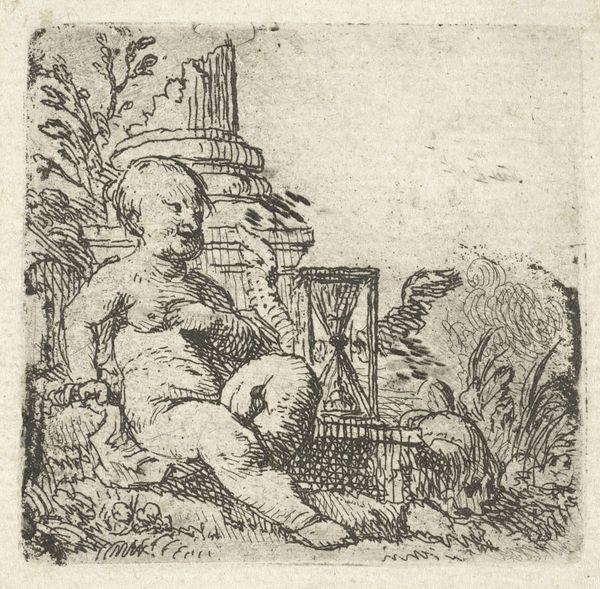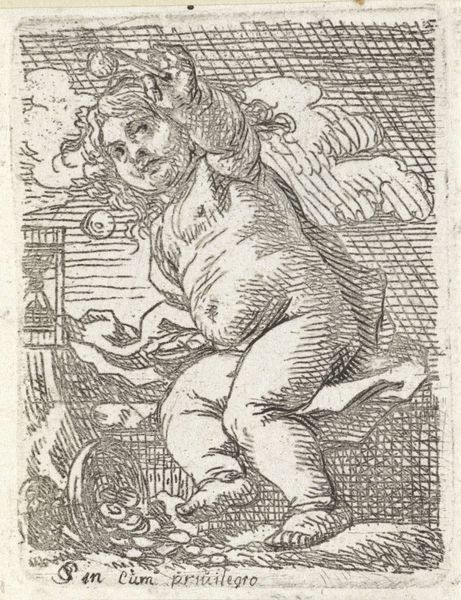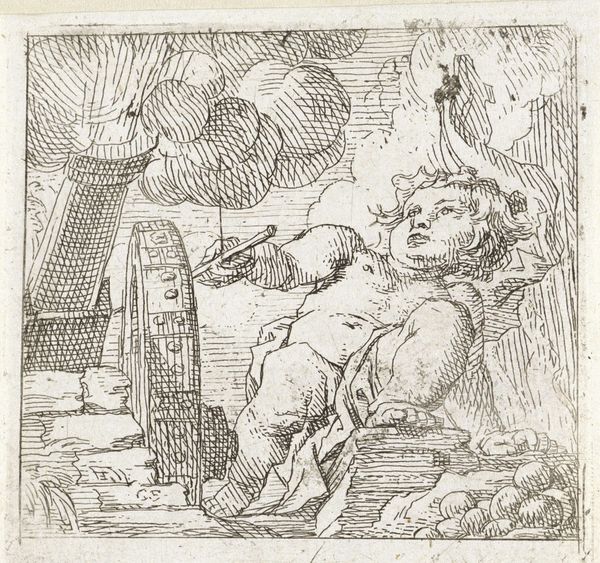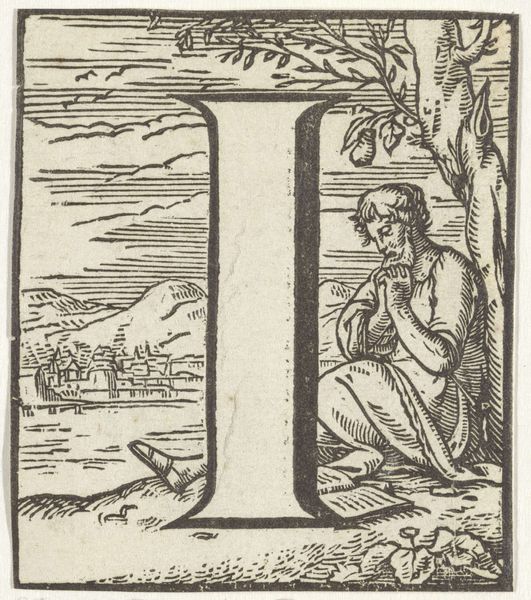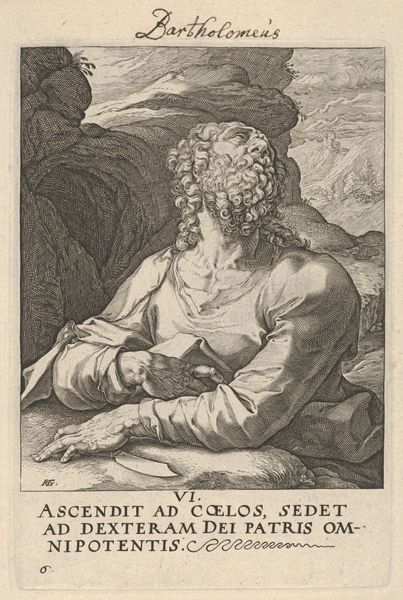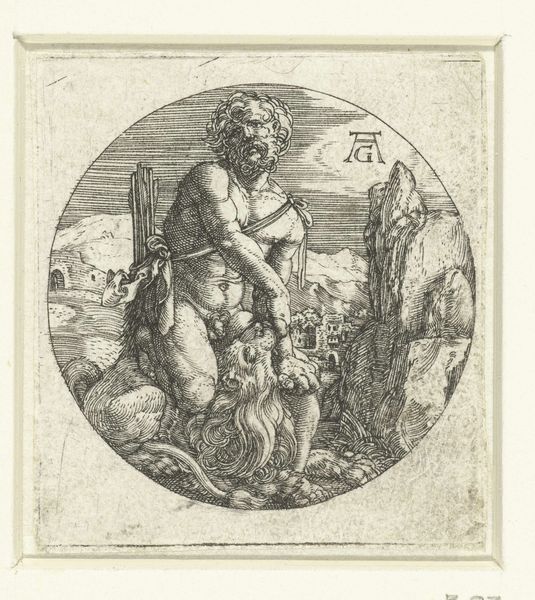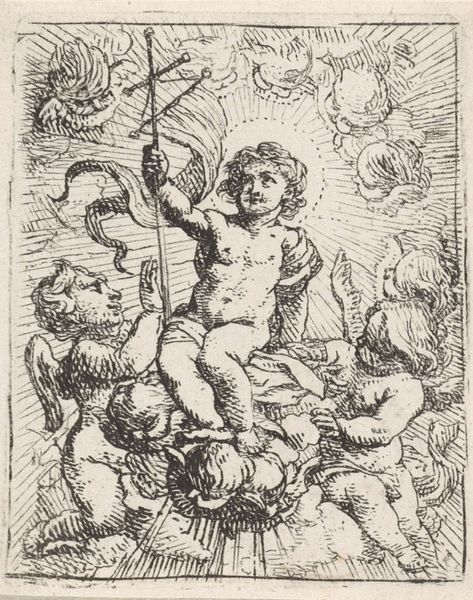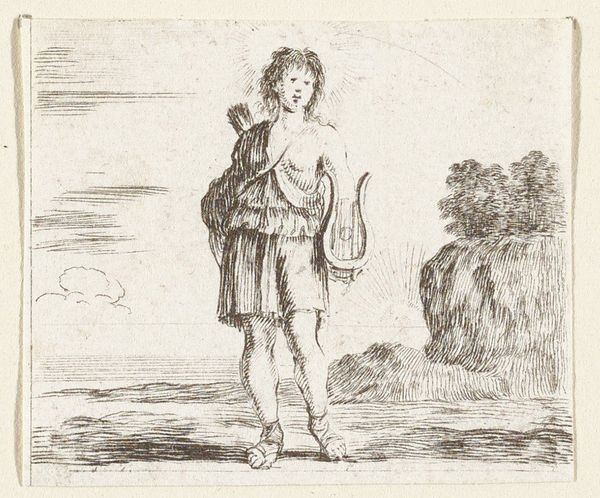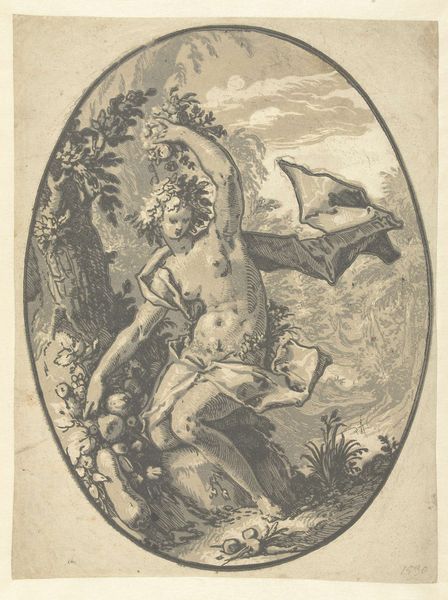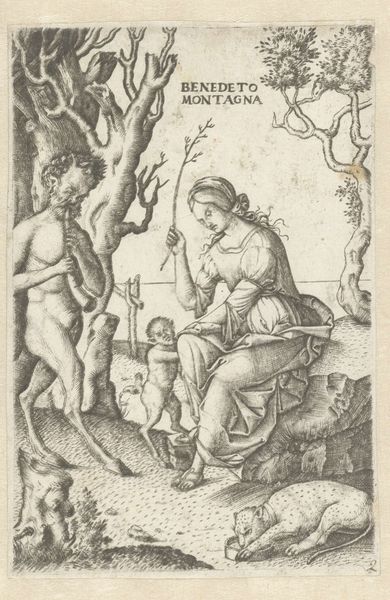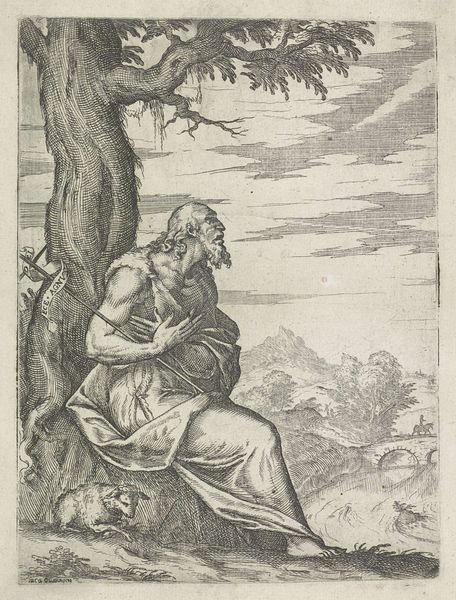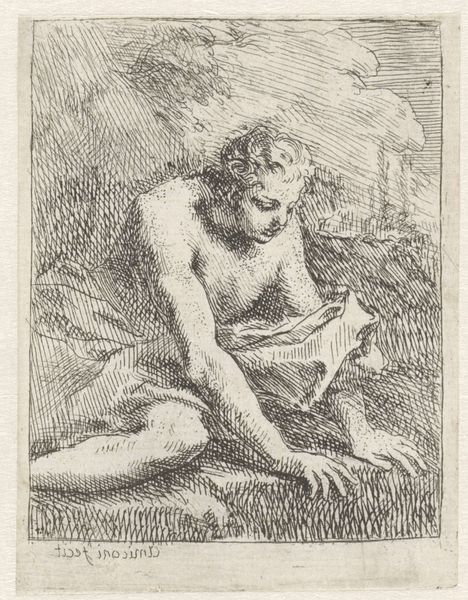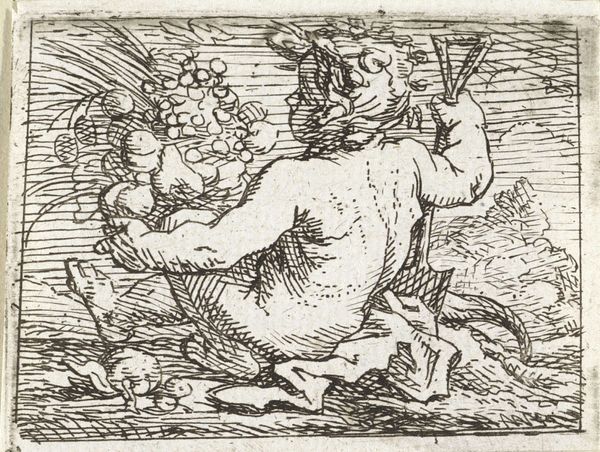
print, engraving
#
baroque
# print
#
figuration
#
history-painting
#
engraving
Dimensions: height 50 mm, width 46 mm
Copyright: Rijks Museum: Open Domain
Cornelis Schut made this small etching of the young John the Baptist in the 17th century. Etching is a printmaking technique that relies on the corrosive power of acid to create lines in a metal plate. The plate is first covered with a waxy, acid-resistant substance, through which the artist scratches the design. When the plate is immersed in acid, the exposed lines are eaten away, creating grooves that hold ink. The whole plate is then inked and wiped clean, leaving ink only in the etched lines. Pressed against paper, the image is transferred, revealing a mirror image of the original design. Look closely and you can see how Schut manipulated the etched line to create tone and texture. Areas of dense, cross-hatched lines create deep shadows, while lighter, more delicate lines suggest form and volume. The process, while precise, also allows for a degree of spontaneity, visible in the dynamic, swirling lines that define the landscape. This combination of control and freedom is one of the enduring appeals of etching, bridging the gap between meticulous craft and artistic expression.
Comments
No comments
Be the first to comment and join the conversation on the ultimate creative platform.
